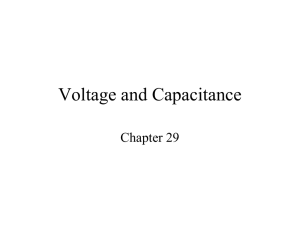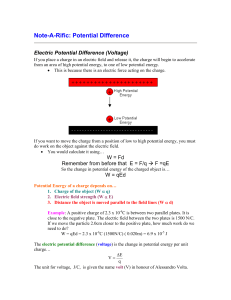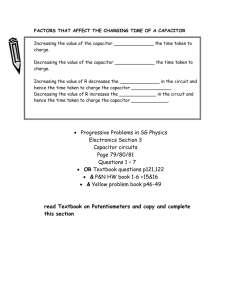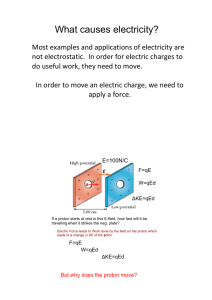Two parallel plates have opposite charges
advertisement
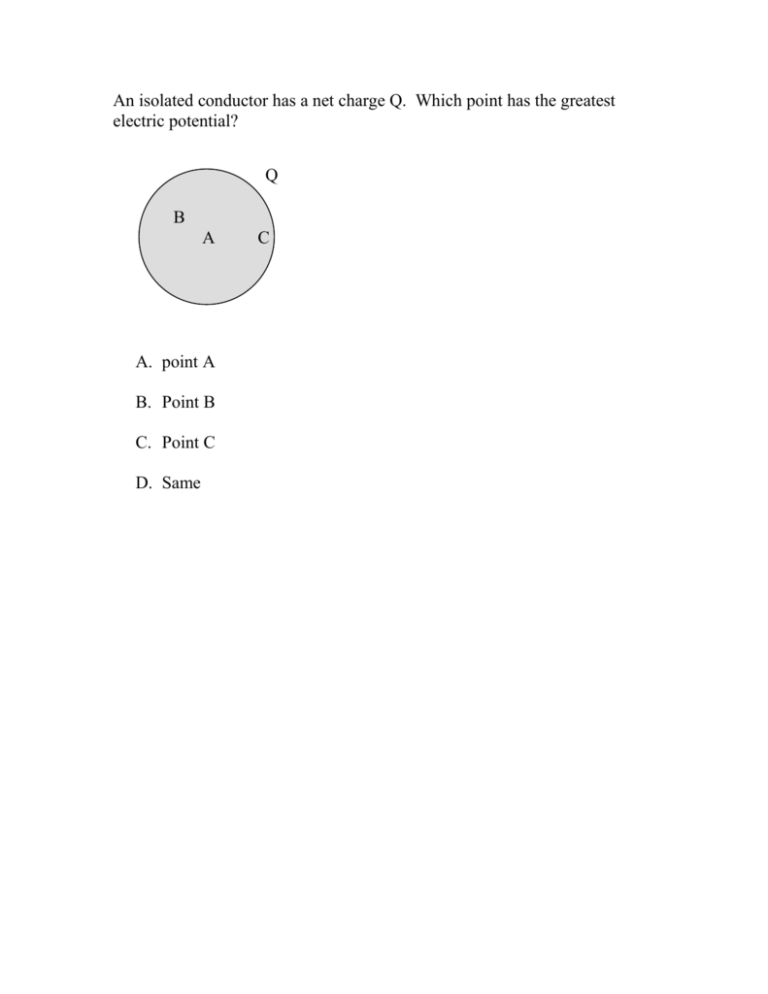
An isolated conductor has a net charge Q. Which point has the greatest electric potential? Q B A A. point A B. Point B C. Point C D. Same C Where is the electric potential the greatest? A B C +Q -Q Two parallel plates have opposite charges. A proton is released from rest at the positive plate at the same time as an electron is released from rest at the negative plate. Which particle is first to reach the opposite plate? proton electron A. proton B. electron C. same time Charges +2Q and –Q are a distance R apart. What is the sign of the electric potential at the point marked “x” a distance R to the right of –Q? R + 2Q A. positive B. negative C. zero R -Q The point marked “x” is midway between the charges Q and –Q. Which of the following statements is true? +Q A. Both E and V are zero. B. Both E and V are non-zero. C. E is zero but V is non-zero. D. V is zero but E is non-zero. -Q A parallel plate capacitor is connected to a battery. While it is still connected, the separation of the plates is increased. Which statement is true about the capacitor? A. The charge and voltage both decrease. B. The charge and voltage both increase. C. The charge increases and the voltage decreases. D. The charge decreases and the voltage increases. E. The voltage stays the same and the charge decreases. A parallel plate capacitor is connected to a battery and is then disconnected. While it is disconnected, the separation of the plates is increased. Which statement is true about the capacitor? A. The charge and voltage both decrease. B. The charge and voltage both increase. C. The charge increases and the voltage decreases. D. The charge decreases and the voltage increases. E. The charge stays the same and the voltage increases.




